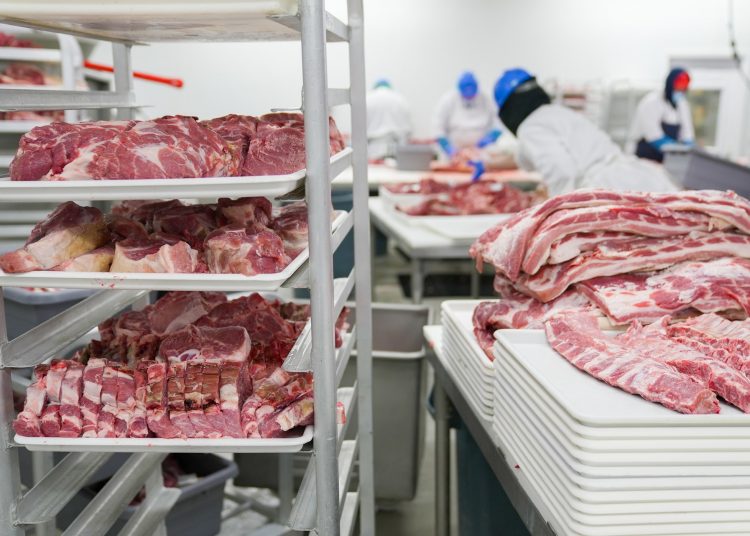(The Center Square) – There may be more federal support for mid-sized meat processors and resources for small-scale meat lockers and facilities if Iowa Secretary of Agriculture Mike Naig gets his way.
Naig responded on August 31 to the United States Department of Agriculture’s request for information on how to increase competition and product capacity in the meat processing industry, which they would support with $500 million in American Rescue Plan funds. More than $150 million would be available for existing small and very small processing facilities.
Naig said in his letter to the department Iowa has more than 250 meat processing facilities but is “severely lacking” mid-sized processors.
“In order to increase competition in this sector, the USDA must prioritize support for new or expanded mid-sized processors. Mid-sized plants could help fill the gap by providing a new market option for larger-scale producers while also being able to process significantly more than a small locker,” he said.
He added the USDA should consider redefining plant sizes “to more accurately reflect the landscape … and help target resources to where they can be most impactful” and that the department could do that by adding a category for mid-sized facilities or designating the plants by the number of animals processed instead of the number of employees.
Naig also said “any support” federally inspected plants receive “must also be offered to plants licensed at the state level.”
“Federal rules require that any state-administered meat and poultry inspection program must be equal to or greater than federal regulations,” he said. “These facilities are meeting the same requirements so they should be treated the same and offered the same opportunities.”
Naig recommended the USDA establish a clearinghouse of federal resources and programs that could help people who want to start small-scale peat processing operations; provide plants access to capital for expanding existing facilities’ processing capacity and operations; and ensure small plants and existing plants receive “the same supports and resources as new facilities.”
He said Iowa’s Meat and Poultry Inspection Bureau has “been inundated” in the past 18 months with phone calls from people who want to launch new small-scale meat lockers and want to know what help is available from the state or federal government in the form of building plans, regulatory requirements and financial assistance.
“Many of Iowa’s small meat lockers are completely booked in 2022 and some have already begun scheduling requests for 2023,” he said. “The demand already exists, it’s just a matter of if they can keep up and do more.”
Naig said in an August 31 news release regarding the letter the strategies he proposed are based on conversations he had with “countless” livestock producers and locker owners regarding their challenges and needs.
“The strategies … will significantly improve issues related to price transparency, strong livestock markets and access to working capital,” he said in the release. “Iowa is a national leader in livestock production and processing so it’s critical that our agricultural community’s voice is heard on this topic.”
Naig will chair the Artisanal Butchery Task Force, which will study workforce issues in the meat processing industry. At its first meeting, from 1 p.m. to 3 p.m. on September 7, the task force will discuss challenges lockers and meat processors face, strategies and solutions, and upcoming stakeholder and public outreach. The meeting will be held at the Wallace State Office Building in Des Moines, with virtual attendance options.
Legislators and Gov. Kim Reynolds established the task force and a butchery innovation and revitalization fund and program through House File 857 this past legislative session.
The Iowa Department of Agriculture and Land Stewardship used $4 million of CARES Act funds to provide grants to 204 local meat and poultry processors to support their purchase or upgrade of equipment to increase processing capacity, continuing education in meat sciences, and direct-to-consumer sales strategy.
















